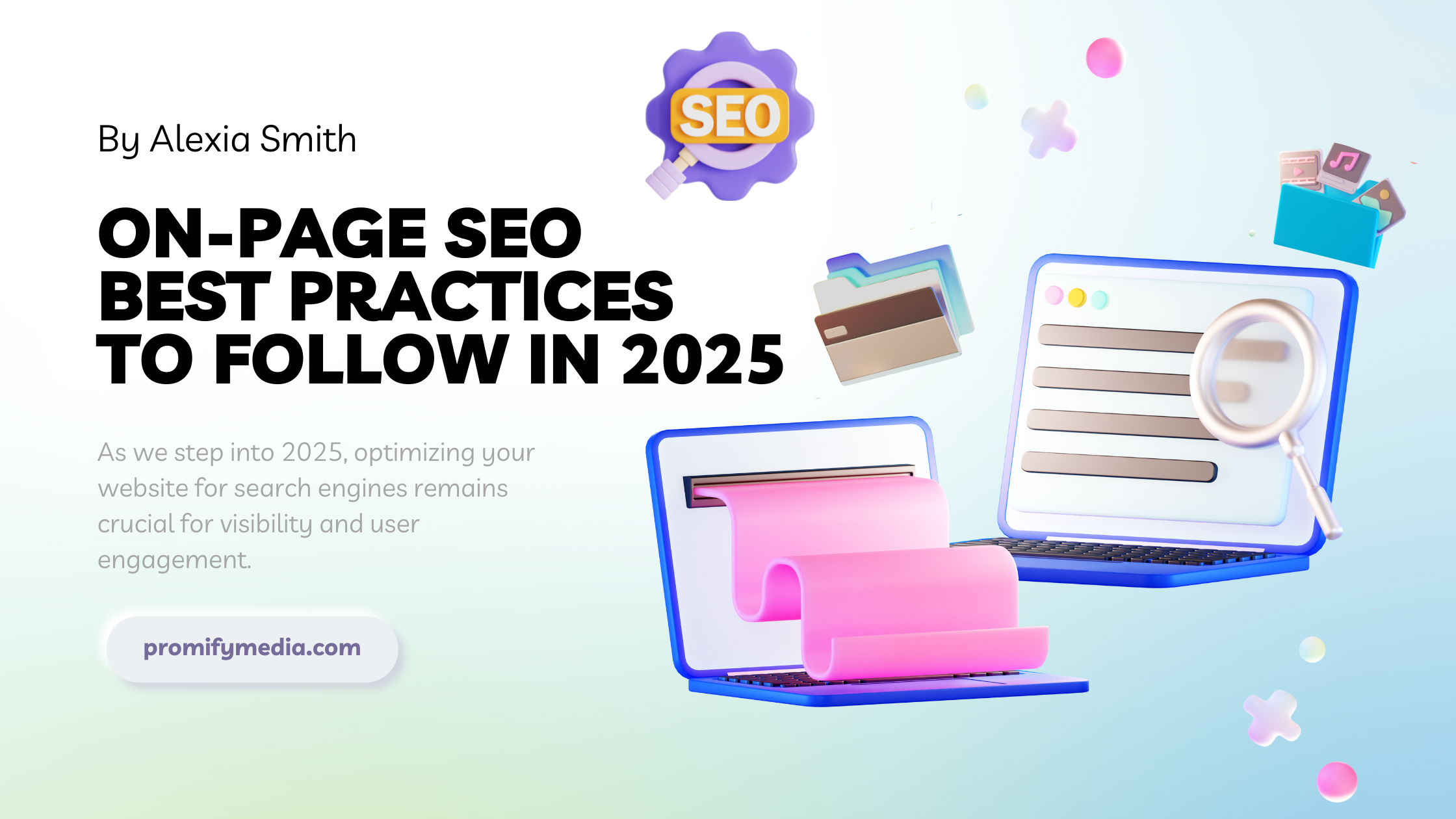As we step into 2025, optimizing your website for search engines remains crucial for visibility and user engagement. On-page SEO refers to the strategies and techniques applied directly on your website to improve its ranking in search engine results pages (SERPs). This blog will cover essential on-page SEO best practices you should implement to enhance your website’s performance.
Understanding On-Page SEO
On-page SEO involves optimizing various elements on your website, including content, HTML source code, and site architecture. The goal is to make your site more relevant to search queries while providing a better user experience. By focusing on on-page SEO, you can ensure that search engines understand your content and users find it valuable.
Key On-Page SEO Best Practices
1. Optimize Title Tags and Meta Descriptions
- Title Tags: Ensure each page has a unique title tag that includes the primary keyword. Keep it under 60 characters for optimal display in SERPs. A well-crafted title tag not only improves rankings but also encourages users to click on your link.
- Meta Descriptions: Write compelling meta descriptions around 150-160 characters that summarize the page content and include keywords. This can improve click-through rates significantly. Think of the meta description as a mini-ad for your page; it should entice users to click.
2. Use Header Tags Effectively
Utilize header tags (H1, H2, H3) to structure your content logically. The H1 tag should contain the main keyword and represent the main topic of the page. Use H2 and H3 tags for subheadings, which help break up content and improve readability. This structure not only aids search engines in understanding your content but also enhances user experience by making it easier to scan.
3. Keyword Placement
Place your primary keyword within the first 100 words of your content. This signals to search engines what the page is about early on. However, avoid keyword stuffing; instead, focus on creating natural, reader-friendly content. Use variations of your keywords throughout the text to maintain relevance without compromising readability.
4. Create Quality Content
Your content should be unique, informative, and valuable to users. Aim for comprehensive articles that answer common questions in your niche. Google prioritizes content that demonstrates expertise, authority, and trustworthiness (E-A-T). Conduct thorough research and provide insights that are not readily available elsewhere. Engaging multimedia elements like images, videos, or infographics can also enhance the quality of your content.
5. Optimize URLs
Keep URLs short, descriptive, and keyword-rich. A well-structured URL not only helps search engines understand the page but also improves user experience. For example, instead of using a URL like www.example.com/page123, use www.example.com/on-page-seo-best-practices. This clarity helps both users and search engines.
6. Internal Linking
Use internal links to connect related content on your site. This helps distribute page authority and guides users through your site, enhancing navigation. Internal links also encourage visitors to spend more time on your site by leading them to additional relevant resources.
7. Image Optimization
Optimize images by using descriptive file names and alt text that includes relevant keywords. This not only improves accessibility but also helps search engines understand the context of images. Additionally, compress images to reduce load times without sacrificing quality.
8. Mobile-Friendliness
Ensure your website is mobile-friendly as Google uses mobile-first indexing. A responsive design improves user experience across different devices. Test your site on various screen sizes to ensure it displays correctly and is easy to navigate.
9. Page Load Speed
Improve your page load speed since it is a ranking factor and crucial for user retention. Tools like Google PageSpeed Insights can help identify areas for improvement. Consider optimizing images, leveraging browser caching, and minimizing JavaScript or CSS files to enhance loading times.
10. Schema Markup
Implement schema markup to help search engines understand your content better. This can enhance your visibility in SERPs with rich snippets such as star ratings or product prices. Schema markup can significantly improve click-through rates by providing additional information directly in search results.
11. Content Length
Research shows that longer content tends to rank better in search results because it often provides more value and thorough coverage of a topic. Aim for comprehensive articles that thoroughly cover topics related to your keywords while maintaining quality over quantity.
12. Use of Canonical Tags
Avoid duplicate content issues by using canonical tags to indicate the preferred version of a webpage when multiple versions exist. This helps consolidate link equity and ensures that search engines know which page should be ranked.
13. Social Sharing Buttons
Integrate social sharing buttons but ensure they do not slow down your site’s performance. Social signals can indirectly impact SEO by increasing visibility and driving traffic when users share your content across their networks.
Advanced On-Page Techniques
In addition to basic practices, consider these advanced techniques:
14. User Engagement Metrics
Monitor user engagement metrics such as bounce rate, time on page, and pages per session using tools like Google Analytics. High engagement rates often correlate with better rankings because they indicate valuable content.
15. Content Updates
Regularly update old content with fresh information or new insights to keep it relevant for users and search engines alike. Search engines favor updated content that reflects current trends or data.
16. Voice Search Optimization
With the rise of voice assistants, optimize for voice search by using natural language processing techniques in your content creation process. Focus on answering questions clearly and concisely as voice searches tend to be more conversational.
Mistakes to Avoid in On-Page SEO
- Ignoring User Intent: Always consider what users are searching for when creating content.
- Keyword Stuffing: Overusing keywords can lead to penalties from search engines.
- Neglecting Mobile Optimization: With increasing mobile usage, a non-responsive site can drive users away.
- Poor Content Quality: Low-quality or thin content will not rank well; focus on providing value.
- Forgetting About Analytics: Regularly check analytics to understand what works and what doesn’t.
- Overlooking Technical SEO: Ensure that technical aspects like site speed, mobile-friendliness, and secure connections (HTTPS) are not neglected.
- Not Using Analytics Tools: Failing to track performance metrics can lead you astray; use tools like Google Analytics or SEMrush for insights.
- Ignoring Local SEO: If applicable, optimize for local searches by including location-based keywords and creating a Google My Business profile.
Conclusion
On-page SEO is an ongoing process that requires attention and adaptation as search engine algorithms evolve. By following these best practices in 2025, you can enhance your website’s visibility, improve user experience, and ultimately drive more traffic to your site. Remember, effective SEO is about understanding both search engines and user needs—strive for quality over quantity, keep learning about new trends in digital marketing, and always prioritize providing value for your audience!
Also Read
- ► How Does Social Media Make People Lazy?
- ► Top 100 Rechargeable Flashlight Gloves SEO Hashtags for Instagram
- ► Top Reasons to Invest in a White Hat Link Building Service Today
- ► How Local Backlinks Can Supercharge Your SEO Results
- ► 10 Call to Action Ideas for Blog Posts
- ► How to Write a Nursing Blog
- ► 10 Common SEO Mistakes That Are Killing Your Website’s Rankings




Leave a Reply